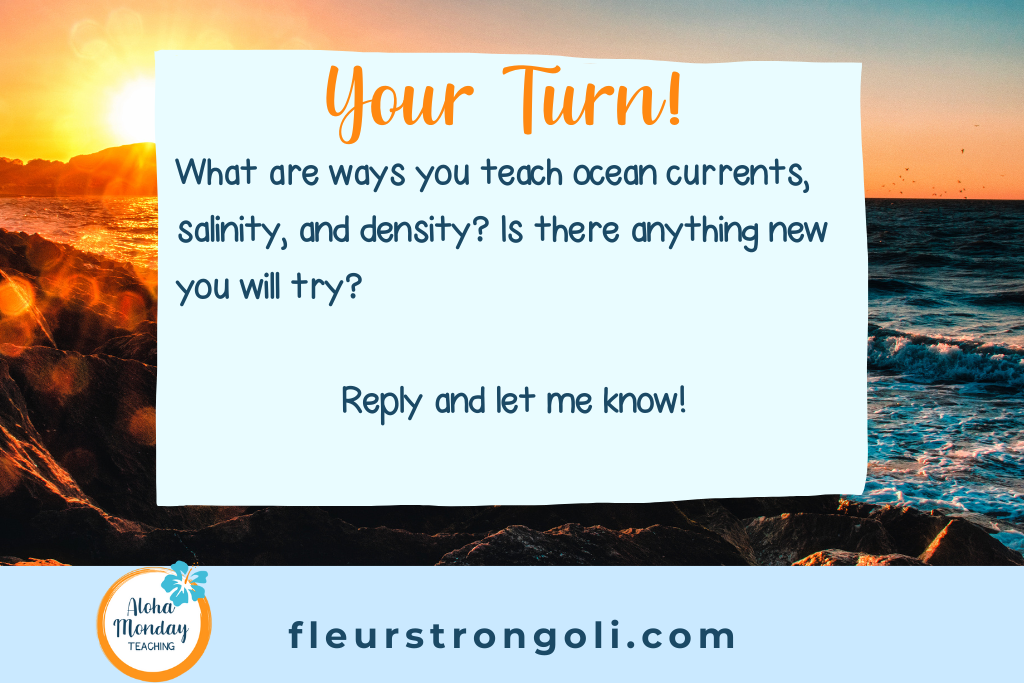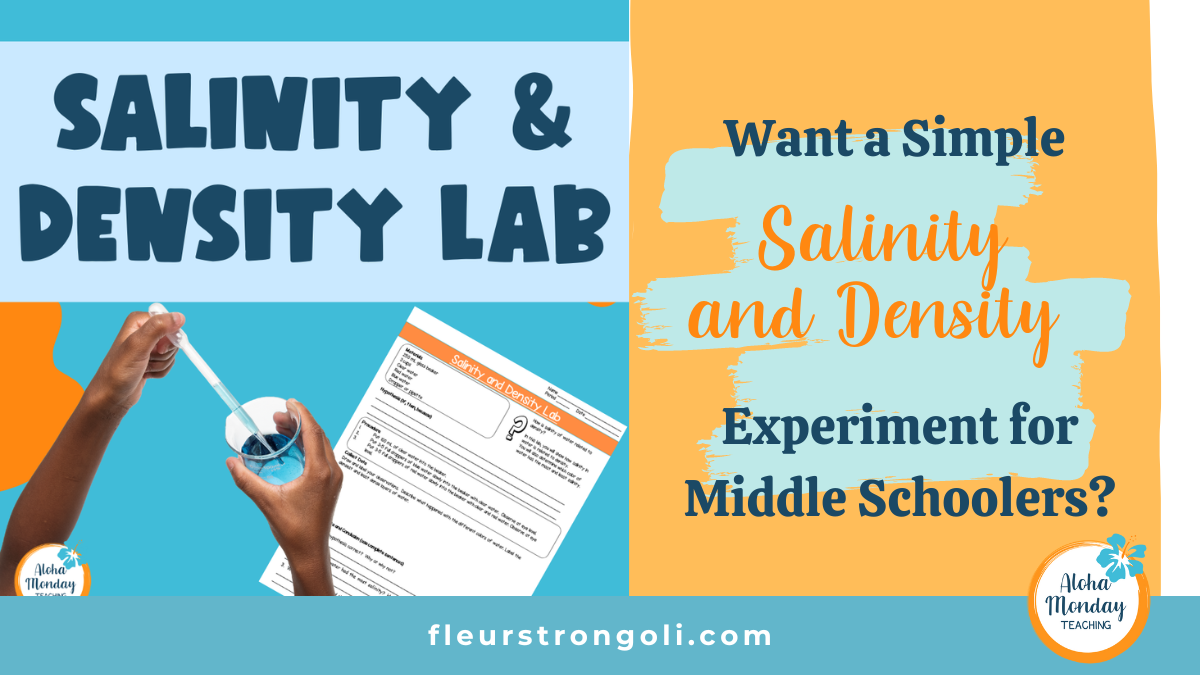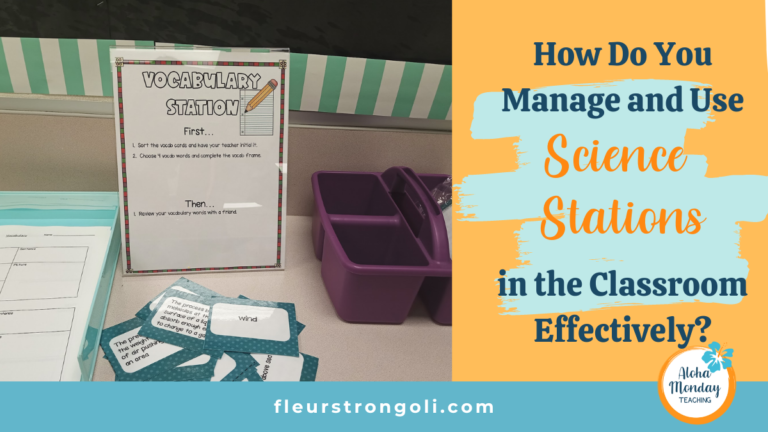Want a Simple Salinity and Density Experiment for Middle Schoolers?
Here is a salinity and density experiment that demonstrates how differences in salinity are related to density without having to go to the poles to show students how salinity and density create deep ocean currents. . This lab also gets students guessing which water has the greatest salinity.
In this post
We will go over salinity and density, when we’d teach it, and when to use this lab. I will share the lab that I do with my students that is very engaging and helps them understand salinity and density.
You can get the Salinity and Density lab here.
Before you start planning your lessons and labs, be sure to get your free guide- Plan Your Science Unit in LESS Time with 3 Simple Steps!
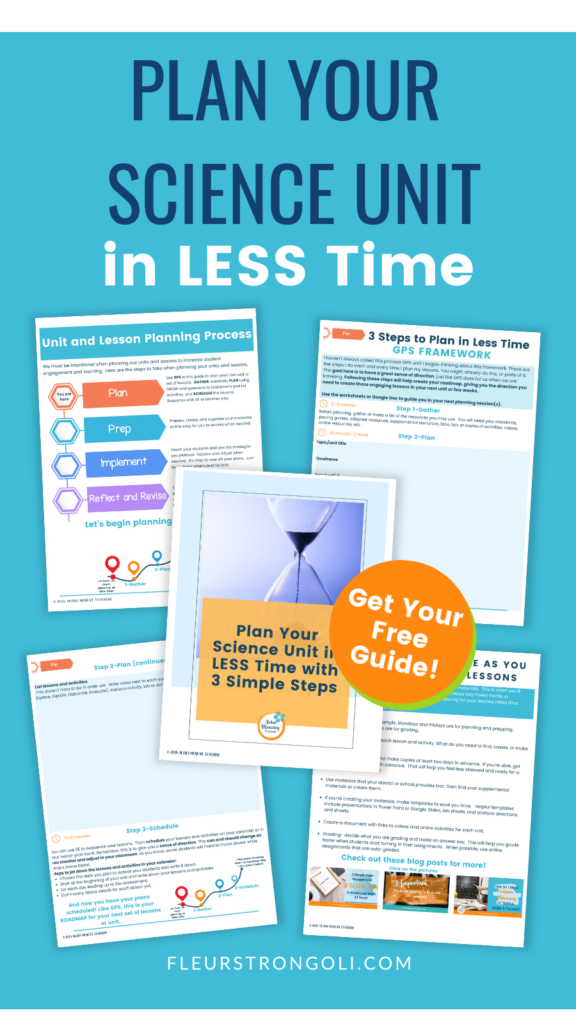
When to teach salinity and density
Density can be taught at different times during science class. When you teach both salinity and density you are likely teaching students about deep ocean currents.
This is supported by this NGSS standard:
MS-ESS2-6. Develop and use a model to describe how unequal heating and rotation of the Earth cause patterns of atmospheric and oceanic circulation that determine regional climates.
For deep ocean currents to form, water at the poles must be VERY cold and VERY salty. This creates water that is extremely dense, causing it to sink very deep into the ocean, creating deep ocean currents.
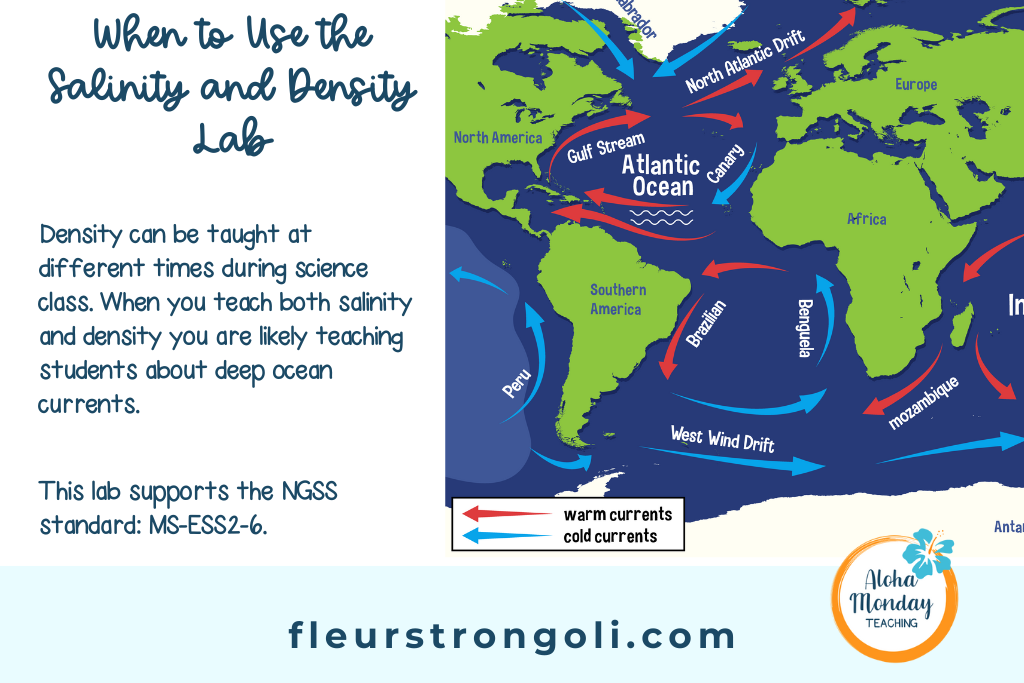
Salinity and Density Lab
There are many density labs you can do with your students. This is one I enjoy doing with my students to show them how differences in salinity create differences in density. I use this after teaching my students about deep ocean currents, so they have background knowledge on salinity and density. They should know that saltier water is denser than freshwater.
Click here to get the salinity and density lab in my TpT store. You’ll get a Power Point, lab sheet, and a lesson plan.
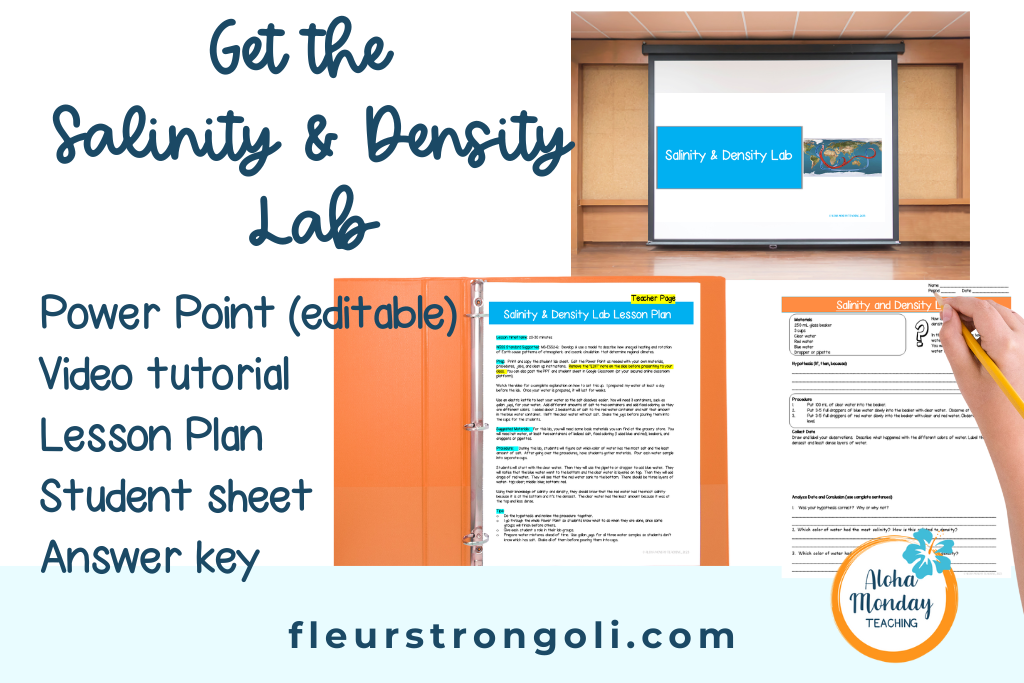
Lab Materials
The lab materials you need include 3 samples of water, a lot of salt, 3 cups, a beaker, and a pipette or dropper. I use large water bottles to hold each sample of water and an electric tea kettle to heat up the water.
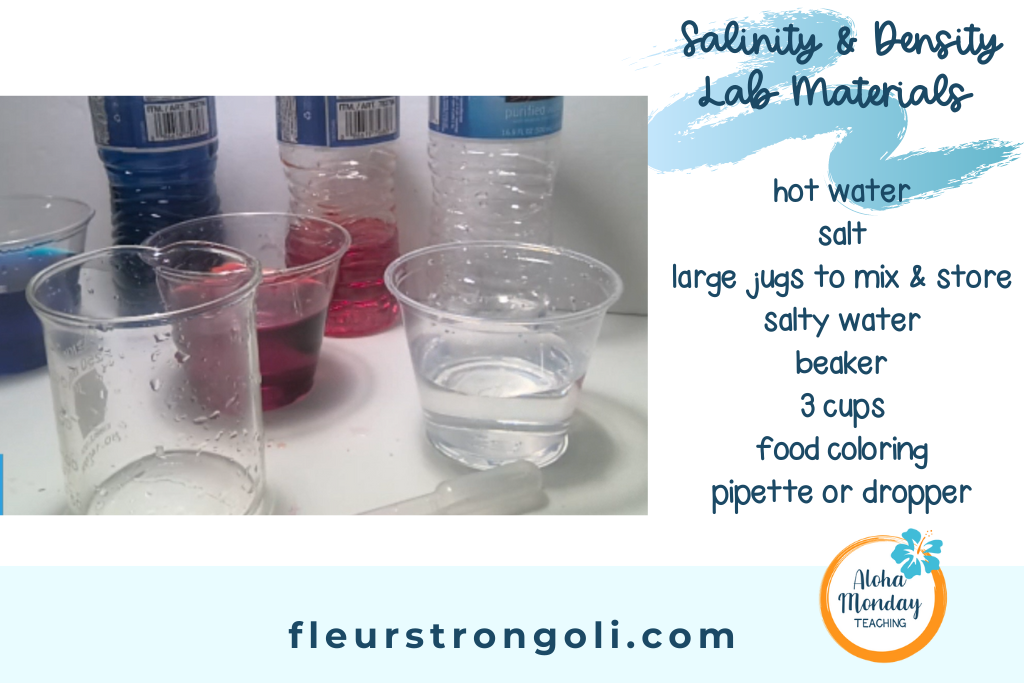
Lab Preparation
To prepare for this lab, you will want to mix water with salt. I’ve found it easier to use hot water when mixing it with salt. I make three samples- one is fresh water, one has about two full beakers or more of salt, and the third has about one beaker of salt. I add food coloring to each of the samples and make note of which is which. For example, clear might be fresh water, blue is half salt, and red is the saltiest. Don’t tell the kids though! They will have to figure this out!
After filling large water bottles with my samples, I shake it before pouring a smaller sample into each cup for the students. I place all of the materials on the tray.
Conducting the Lab with Students
I use a PowerPoint for each lab I do with students. This gives them a visual of each part of the lab along with directions for conducting the lab and cleaning up. Read more about managing labs in this blog post.
Students will follow the directions and put each sample into the beaker. For example, I will have them add 50 mL of clear water to the beaker. Then, they take 2-3 full pipettes of the blue water, place the pipette against the inside of the beaker, and slowly add it to the beaker. Then they observe. Finally, they will do the same with the red water and add it to the beaker.
They should see layers of water, which is layered because of the differences in salinity and density.
Wrapping Up the Lab
When students are finished with the lab, it’s important for them to clean up and to analyze their results or data.
For this lab, I like to ask questions such as:
Was your hypothesis correct? Explain.
Which color of water had the most salinity? The least salinity? How do you know?
How is salinity related to density?
Wrap Up
Teaching about ocean currents, salinity, and density is fun! This lab will really help students understand how deep ocean currents are formed, and how salinity differences create differences in density too. We went over when we would teach salinity and density and how to use this lab in your classroom. You can get the Salinity and Density Lab in my TpT store.
Your Turn
What are ways you teach ocean currents, salinity, and density? Is there anything new you will try? Reply and let me know!
